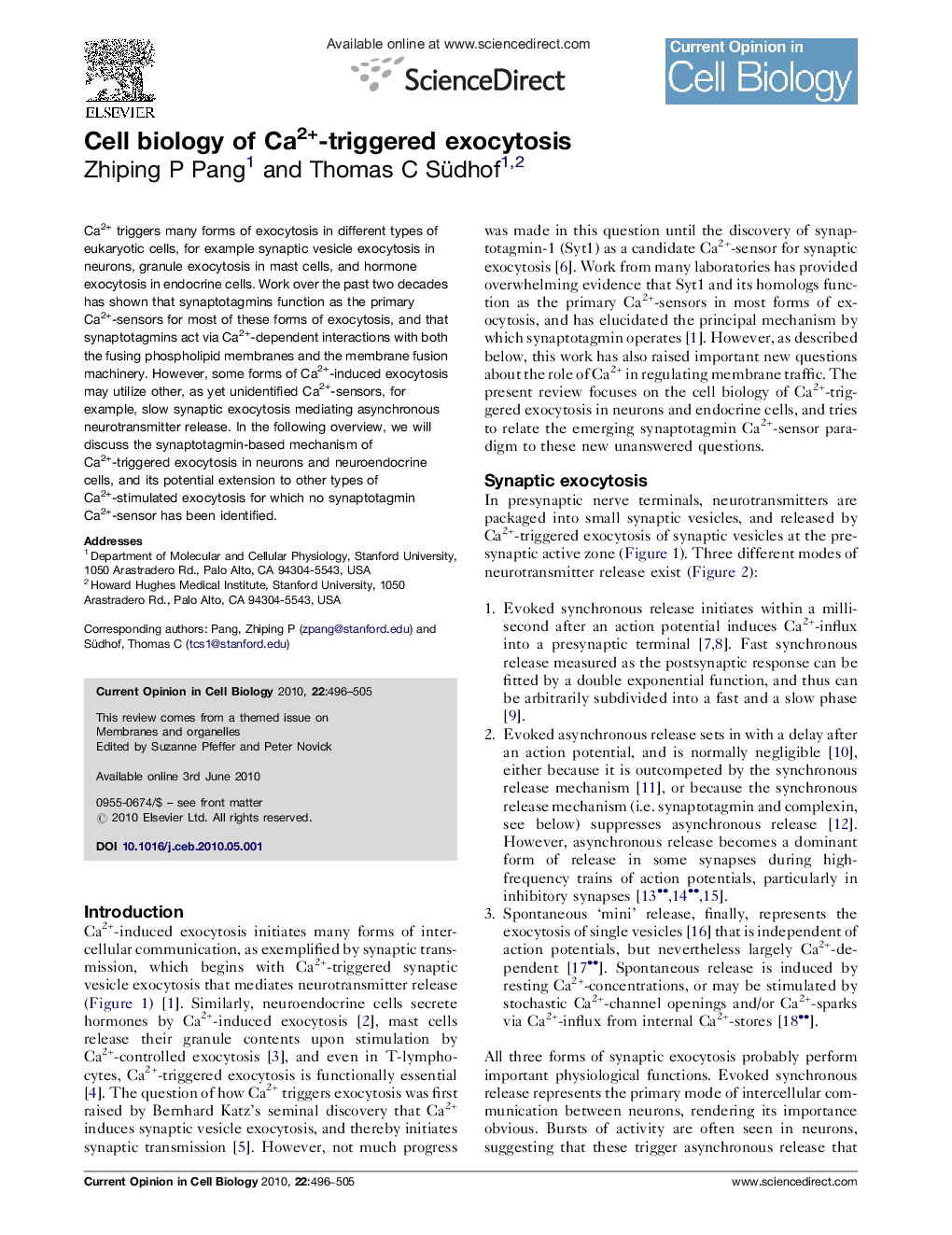| Article ID | Journal | Published Year | Pages | File Type |
|---|---|---|---|---|
| 2170014 | Current Opinion in Cell Biology | 2010 | 10 Pages |
Ca2+ triggers many forms of exocytosis in different types of eukaryotic cells, for example synaptic vesicle exocytosis in neurons, granule exocytosis in mast cells, and hormone exocytosis in endocrine cells. Work over the past two decades has shown that synaptotagmins function as the primary Ca2+-sensors for most of these forms of exocytosis, and that synaptotagmins act via Ca2+-dependent interactions with both the fusing phospholipid membranes and the membrane fusion machinery. However, some forms of Ca2+-induced exocytosis may utilize other, as yet unidentified Ca2+-sensors, for example, slow synaptic exocytosis mediating asynchronous neurotransmitter release. In the following overview, we will discuss the synaptotagmin-based mechanism of Ca2+-triggered exocytosis in neurons and neuroendocrine cells, and its potential extension to other types of Ca2+-stimulated exocytosis for which no synaptotagmin Ca2+-sensor has been identified.
